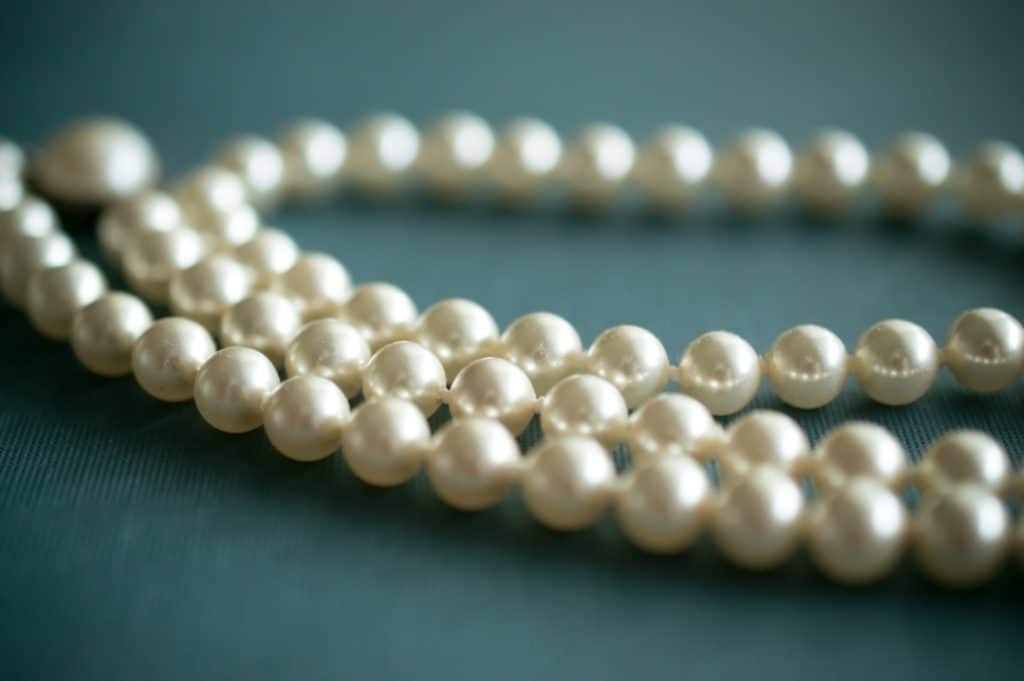Your Guide to Pearl Jewelry

Pearls are a jewelry crowd pleaser. These superstars of the jewel world have long been fan favorites of everyone, from members of the royal families to Hollywood heavyweights like Audrey Hepburn. Whether your style leans more simple or you gravitate to the ornate, pearls are uniquely versatile and can be used to dress your outfit up or down, depending on your preference.
Brittany’s Fine Jewelry has offered Gainesville the highest quality, most beautiful pearls for over 3 decades. If you’re interested in adding this stunning jewel to your collection, read on for our guide to all things pearl.
How Pearls Are Formed
Pearls are widely beloved for their distinct shape, color, shine, and silky texture that feels refined but attainable.
Pearls result from an irritant such as sand penetrating the shell of some mollusks in lakes, rivers, or seas. In turn, the mollusk covers the irritant with a protein called nacre, creating the pearls we know and love.
Natural Pearls vs. Cultured Pearls
Natural pearls are formed entirely unaided, leading them to be more valuable than cultured pearls due to their rarity. With cultured pearls, technicians insert a synthetic irritant to induce nacre creation, and the resulting pearl is more affordable than a natural pearl but just as beautiful. Many of the pearls for sale today are cultured.
Types of Pearls
No matter your aesthetic, there is a pearl to suit every taste.
Freshwater
Freshwater pearls are somewhat smaller than those created in saltwater, but they come in various colors, including light pink, white, or cream, making them perfect for dainty jewelry pieces such as rings.
Akoya
This pearl was the first pearl cultivated in Japan during the 1920s and is formed in the world’s smallest saltwater oyster. Their round and symmetrical formation, as well as their iridescence and white shade, make them perfect for earrings or necklaces.
South Sea
These round and white pearls are the rarest of the cultivated variety, formed inside the sensitive oyster, the white-lipped Pinctada maxima. This oyster produces noticeably large and smooth pearls with a high luster best suited for statement jewelry such as stud or drop earrings and pendants.
Tahitian
This pearl is cultivated in a black-lipped oyster, producing a pearl that appears black but actually ranges from dark gray to black with green or purple hues that make them exciting enough to be the main jewel in earrings, bracelets, or necklaces.
How to Choose a Pearl
The variety of pearls available makes it easy to find one that suits your unique style and taste. But, some considerations will ensure you end up with a piece you love for years to come.
Size
To choose a pearl, consider the size you want for your piece. Freshwater pearls come in sizes ranging from 5mm to 13mm, Akoya from 2mm to 10mm, Tahitian pearls from 8mm to 20mm, and South Sea pearls from 3mm to 9.5mm.
Shape
Round pearls are the most valuable and desired due to their perfectly spherical shape. The irregularities of semi-round pearls are undetectable by the naked eye, so while they may appear perfectly spherical, their flaws make them somewhat less valuable than round pearls. Drop pearls resemble teardrops and, if flawless, can be incredibly valuable. Baroque-shaped pearls are irregular and affordable compared to other varieties.
Color
Pearls come in white, ivory, gray, champagne, purple, black, pink, green, chocolate, lavender, or blue, with naturally colored blue pearls being the rarest.
A Pearl for Every Person
Even though pearls are June’s birthstone, they are perfect for anyone who likes wearing lustrous eye-catching jewelry. There is truly a pearl for everyone, from the classic white pearls to the edgier black pearls and everything in between. When you’re ready to see how a beautiful pearl piece from Brittany’s Jewelry can enhance your wardrobe, come stop by our showroom.

